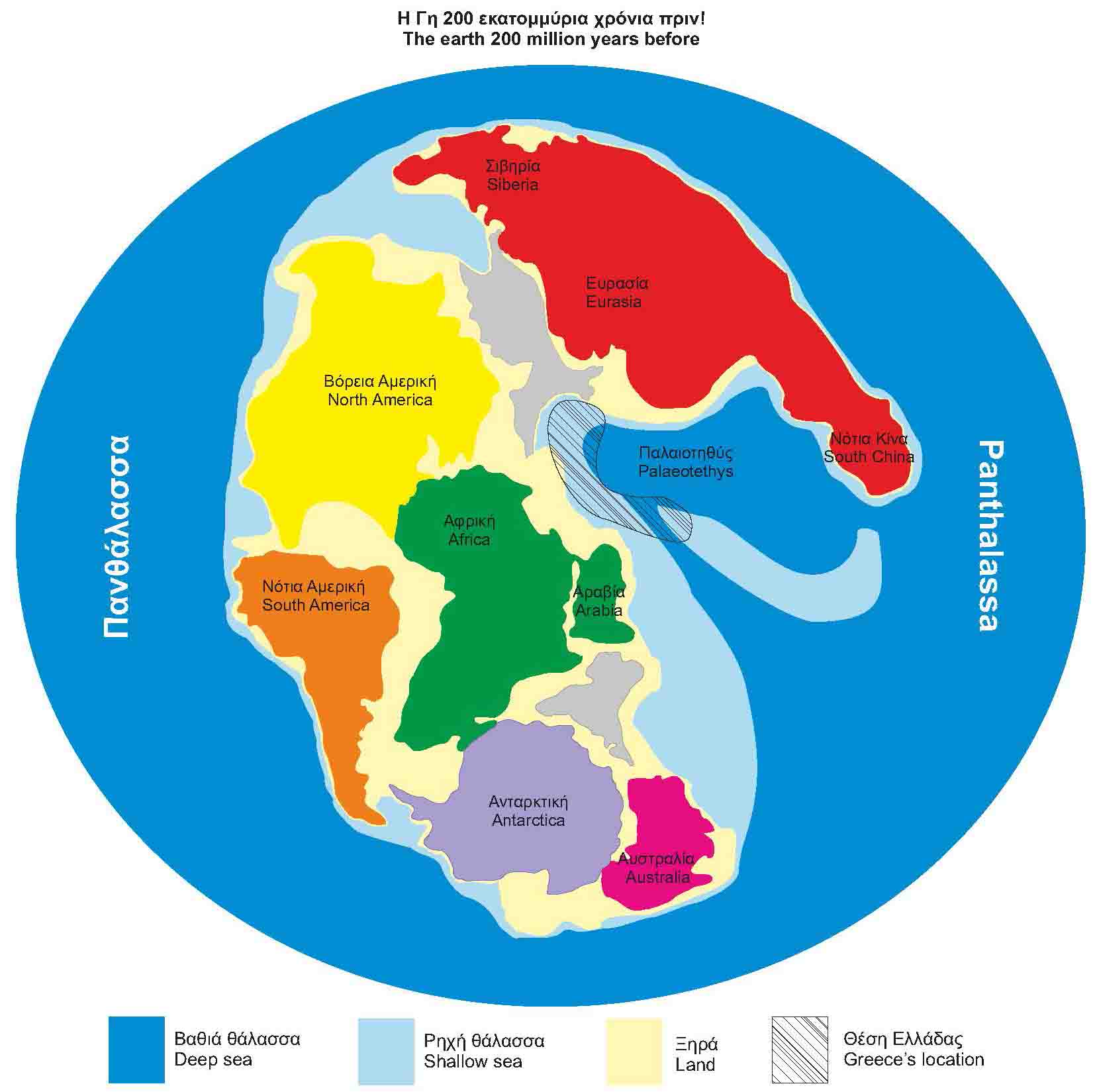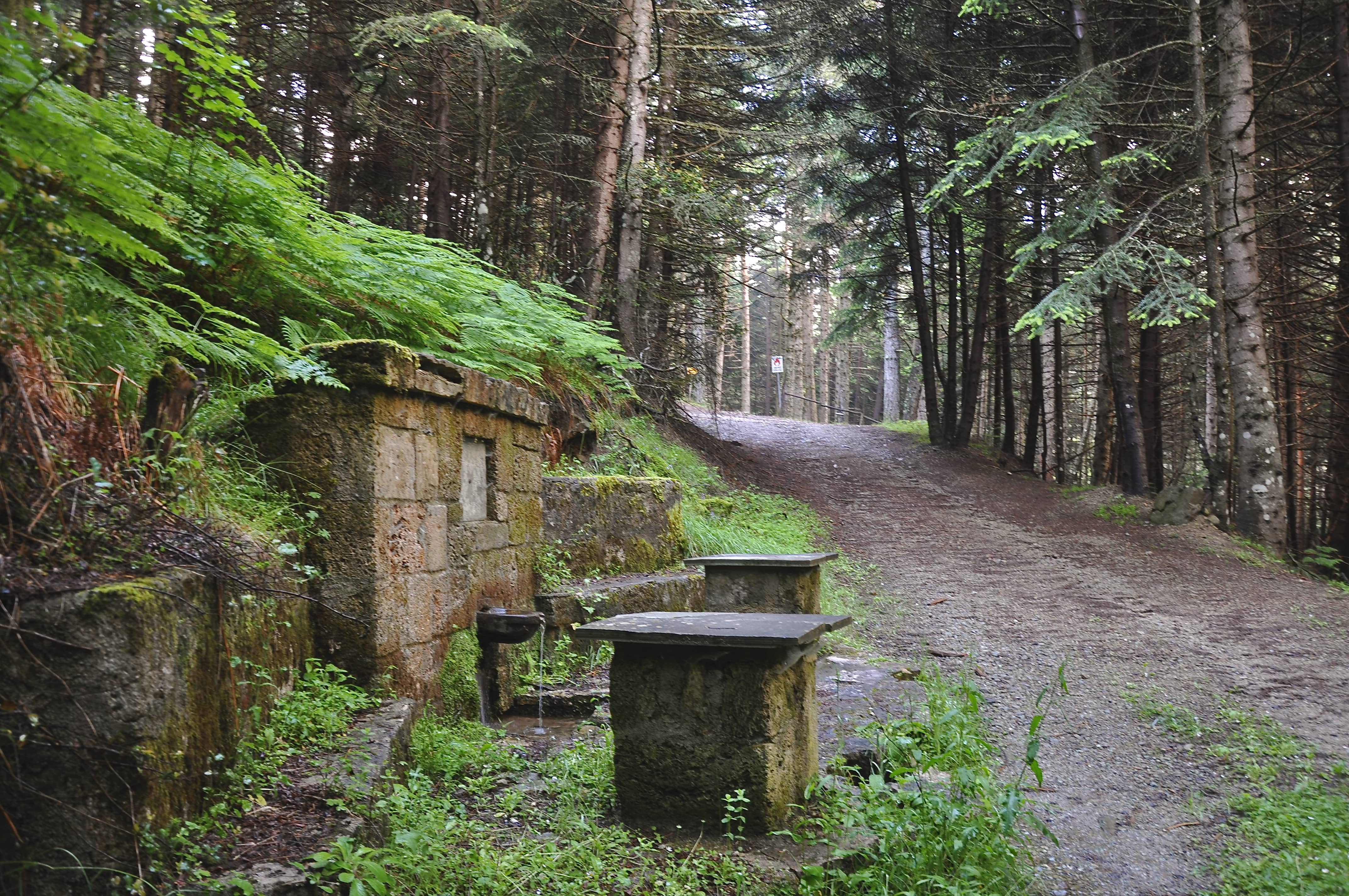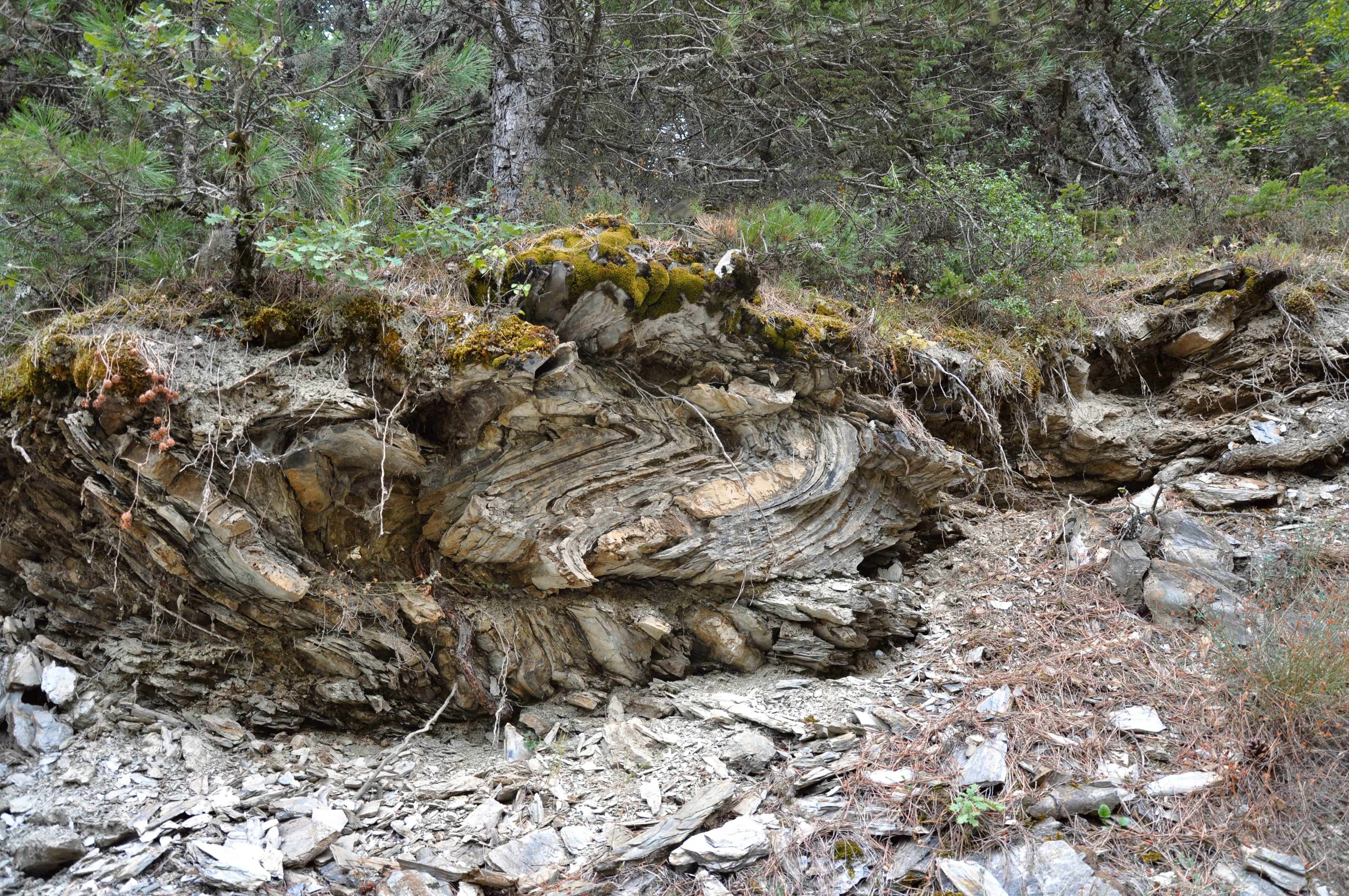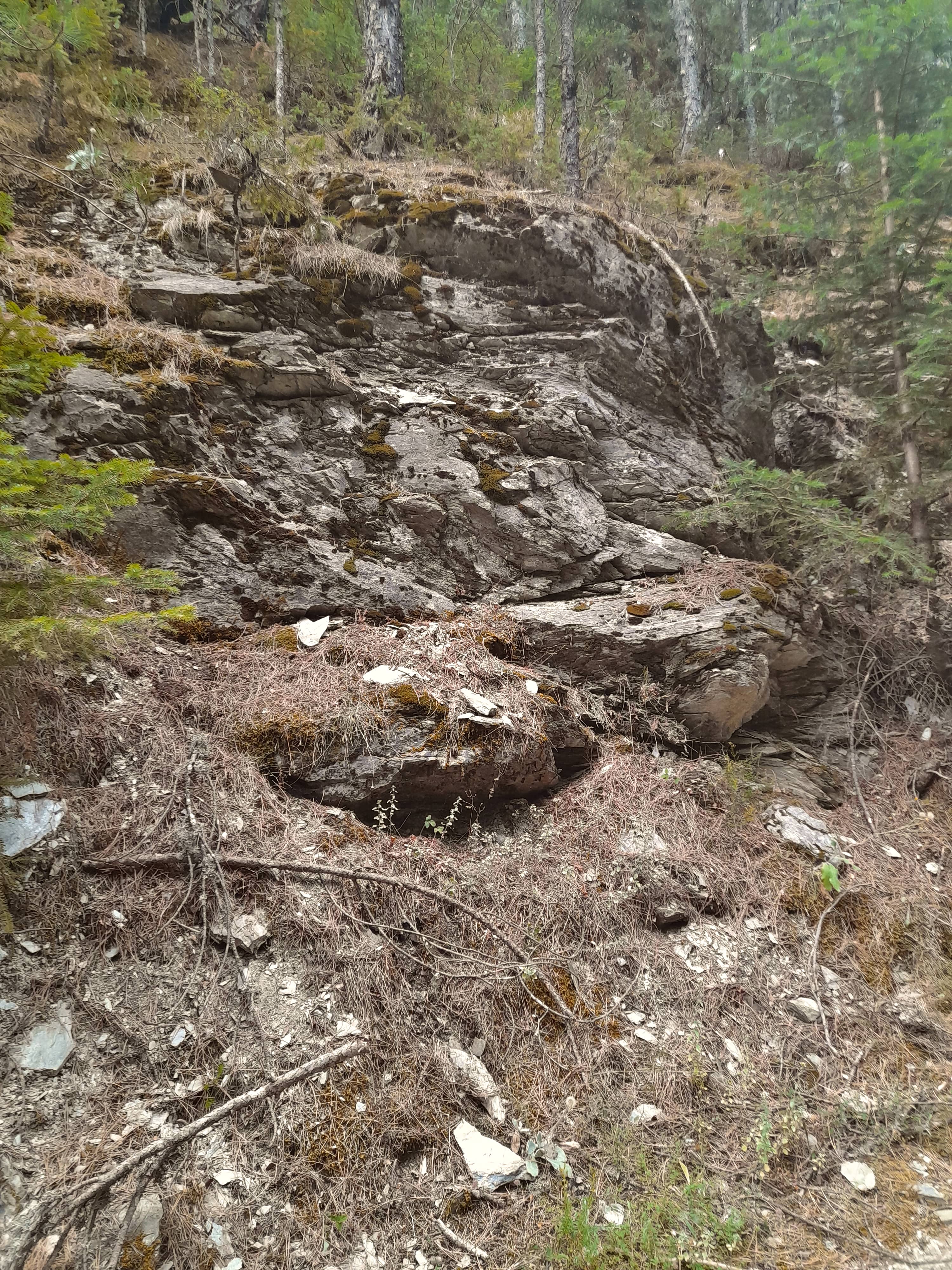ANCIENT SUBMARINE VOLCANOES
The village of Solos consists a meeting point. From Solos walking paths start, such as the one heading to the geosite Styχ Waters and also the one to Kastraki area where an important battle during the Greek Revolution (1821) took place. The rocks in Solo testify that in a distant era, in the area there were… volcanoes!
Geodiversity
At this geosite different rocks have been formed 298-247 million years ago. They consist of explosive volcanic rocks, shales, phyllites, quartzites and black limestones.
About 298-247 million years ago the geographical distribution of land and sea all over the world was very different. There was one super-continent, Pangaea, and around it a vast ocean, Panthalassa, and a few smaller “oceans” such as Palaeotethys. During the collision and the formation of Pangaea large blocks of the earth crust were subducted underneath others, were melted and came out on the surface as volcanic material through volcanoes. These are the rocks of Solos geosite.
There are also rocks that have been slightly metamorphosized! They were buried deep in the earth crust and their internal structure has changed due to the high pressure and temperature that were subjected to. Now these rocks can be easily separated into thin sheets (thin sheets=phylla in Greek language where phyllites took their name).
Due to the pressure caused by the subduction of the African plate underneath the Eurasian one, the rocks were compressed, were metamorphosized, were folded, got fragmented, and finally they were uplifted in high altitudes where they are observed today.
Biodiversity
The vegetation of the area is characterized mainly by forests of Pinus nigra, Castanea sativa and Abies cephanonica, as well as communities of Quercus coccifera. Many endemic plants grow on limestone rocks and stony soils. The area is located within the Special Protection Area (SPA) for avifauna “OROS CHELMOS (AROANIA)-FARANGI VOURAIKOU KAI PERIOCHI KALAVRYTON” (GR2320013). The avifauna of the area is of great interest and includes birds such as the Golden Eagle (Aquila chrysaetos), and the Eurasian eagle-owl (Bubo bubo).




